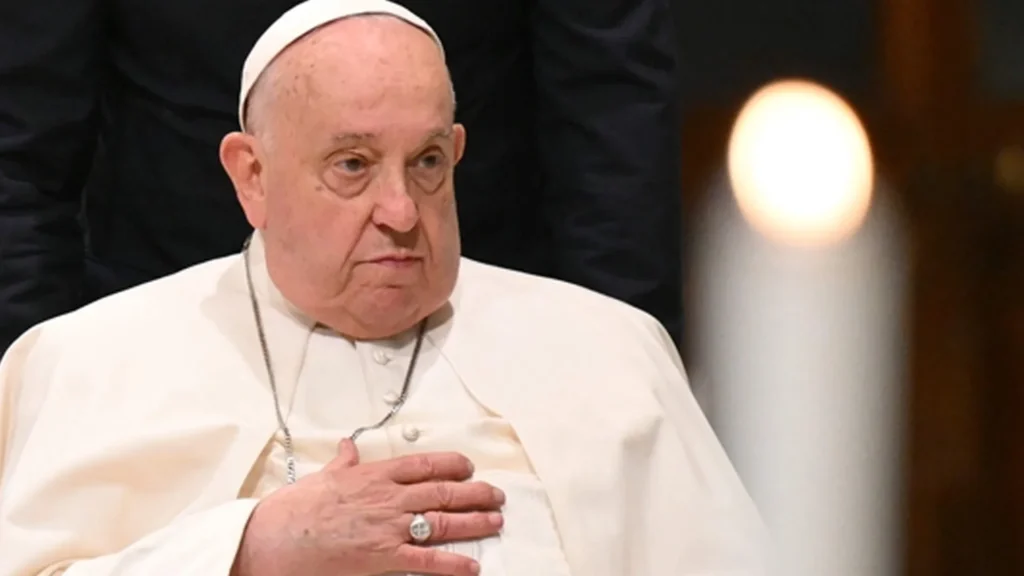As the Catholic world mourns the death of Pope Francis at age 88, the legacy of history’s first Latin American pontiff remains as polarizing as it is profound. His transformative vision for a more inclusive, pastoral church sparked not only sweeping reforms but also unprecedented opposition from within the Vatican’s own ranks.
From his election in 2013, Pope Francis was viewed with suspicion by conservative and traditionalist factions of the Church. Unlike his predecessor, Pope Benedict XVI, Francis rejected pomp in favor of humility—appearing without the traditional red velvet cape and washing the feet of women and Muslims in early gestures that signaled a new era.
The divide reached a symbolic flashpoint in 2019, when Amazonian bishops gathered in Rome for a synod on Indigenous rights and environmental protection. Just before dawn on October 21, a man entered a nearby church, stole three Indigenous statues brought for the synod, and threw them into the Tiber River—capturing the act on video to protest what he called “pagan idolatry.” The act revealed the extreme lengths Francis’ critics were willing to go to challenge his leadership.
Now, with Francis’ death, attention turns to the future. Traditionalists in the College of Cardinals—some of whom were sidelined by Francis—will likely attempt to steer the next papal election toward a more conservative figure. The conclave promises to be a battleground for the soul of the Church.
A Papacy of Resistance and Reform
Francis’ pontificate faced unusually vocal resistance, intensified by the presence of a living predecessor. Pope Benedict XVI, who resigned in 2013 and lived as “pope emeritus” until his death in 2022, became a spiritual reference point for conservative Catholics who questioned Francis’ legitimacy and doctrinal choices.
Following Benedict’s death, his longtime secretary published a tell-all memoir critical of Francis, and it emerged that Cardinal George Pell had penned a scathing anonymous memo labeling Francis’ leadership a “catastrophe.” Despite these attacks, Francis often responded with silence or subtle moves to neutralize dissent—appointing reform-minded clerics and removing high-profile critics from positions of power.
Progressive Push Meets Conservative Wall
From opening the door for divorced and remarried Catholics to receive Communion to approving blessings for same-sex couples, Francis’ progressive agenda was a lightning rod. The backlash was swift and global. Four cardinals famously submitted “dubia”—formal questions about his teachings—accusing him of undermining Church doctrine. He never responded.
He also reversed a major liturgical reform of Benedict XVI by reimposing restrictions on the Latin Mass, drawing the ire of traditionalist circles. The online platform Rorate Caeli declared, “FRANCIS WILL DIE, THE LATIN MASS WILL LIVE FOREVER.”
Clashes with the Clergy
Some of Francis’ most aggressive critics came from within the Vatican itself. Cardinal Raymond Burke, an outspoken opponent of the synodal process and Latin Mass restrictions, was financially cut off in 2023. Cardinal Robert Sarah tweeted subtle rebukes and aligned with Benedict’s legacy.
Tensions boiled further when Archbishop Carlo Maria Viganò, the Vatican’s former ambassador to the U.S., accused Francis of covering up abuse allegations and demanded his resignation. Viganò was later excommunicated in 2024 for schism after aligning himself with conspiracy theories and rejecting papal authority.
Still, Francis showed remarkable restraint with critics like Cardinal Joseph Zen, a vocal opponent of the Vatican’s deal with China. Rather than rebuke him, Francis described Zen as a “tender soul.”
A Pastor to the Margins
Despite the turbulence, Francis remained committed to his pastoral mission—especially to those on society’s margins. He frequently denounced “clericalism,” challenged Vatican elites, and insisted the Church act as a “field hospital for wounded souls,” notably extending welcome to LGBTQ+ Catholics.
Papal biographer Austen Ivereigh called the 2019 Amazon Synod one of Francis’ defining moments—not because of the protest, but because it embodied his vision of walking with the people. “The pastor among his people, walking together. And I thought, ‘That is him. That sums him up,’” Ivereigh said.
As the Church prepares for the next conclave, Francis leaves behind not just a legacy, but a choice—between the traditions of the past and the compassionate, inclusive vision he championed.



